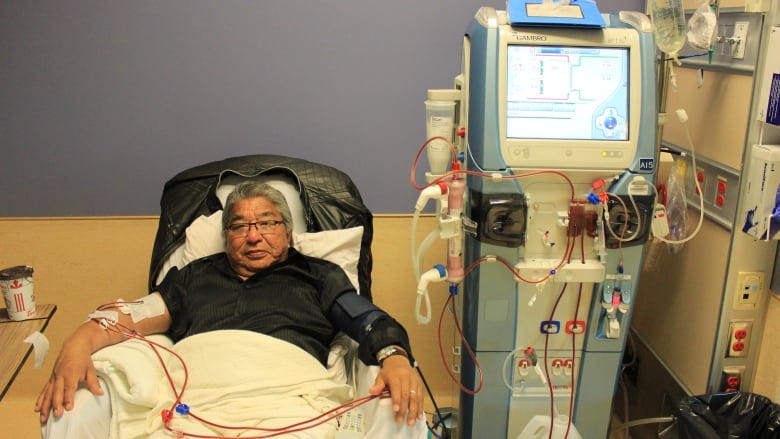Indigenous dialysis patients more likely to be admitted to hospital for infection, report says
Canadian Institute for Health Information says long-distance travel for treatment influences infection rates

A new report by the Canadian Institute for Health Information says that Indigenous kidney disease patients are 20 per cent more likely to be hospitalized due to complications from dialysis treatment, and also have a lower patient survival rate than non-Indigenous patients.
The report also states that Indigenous patients are 30 per cent more likely to be admitted to hospital specifically due to a dialysis infection.
The report says that Indigenous patients experience higherhospitalization rates because they must travel longer distances to receive treatment.
A previousCIHIreport determined that one in five Indigenous patients must travel more than 250 kilometres to receive treatment. Only five per cent of non-Indigenous patientsmust travel that distance for treatment.
Last November, CBC Indigenous reported on CalebMckay, who had to move more than 600 kilometres to receive regular treatment for kidney disease. Originally fromSachigoLake First Nation, Ont., he had to relocate his family to Thunder Bay.
- First Nation family forced off reserve for health care
- First Nations man conducts own dialysis treatments to avoid move to the city
"It's like my world collapsed," he said following the move.
Currently he is receiving hemodialysis, and while he has considered peritoneal dialysis, he's worried about the complications that come with it.
Hemodialysis is typically done in a health care facility, and uses a dialyzer to filter waste from the blood. Peritoneal dialysis is done from home and involves the patient pouring a fluid, also known as dialyzate, into their abdomen. The fluidis removed hours later.
According to the CIHI report, peritoneal dialysis treatment is more likely to lead toinfection, and patients are 27 per cent more likely to be hospitalized due to infections.
Less like to receive transplant
The CIHI also says Indigenous people are less likely to receive a kidney transplant than non-Indigenous patients.
A 2013 CIHI report said that27 per cent of Indigenous end-stage kidney disease patients receive a transplant, as opposed to 42 per cent of non-Indigenous patients.
Indigenous patients are less likely to receive a transplant due to pre-existing health conditions, such as diabetes. According to CIHI, 49 per cent of Indigenous patients with end-stage kidney disease have diabetes, compared to 27 per cent of non-Indigenous patients.
Diabetes affects a patient's suitability for a kidney transplant because it increases the risk of having post-operative complications.
Programs need to targetIndigenous patients
CIHI's report says the way to reduce the hospitalization rates forIndigenous patients is to design programs specifically for them, including creatingmobile clinics, establishing dialysis facilities in Indigenous communitiesand providing cultural training to health care professionals.
CIHI wasn't able to say how many dialysis centres there arein Indigenous communitiesacross Canada. The institute is aware oftwo centres in the Northwest Territories, but clients who attend them still need to start their treatment in Alberta.
The report suggests that patients should spend less time receiving dialysis treatment, and health care providers should push for a kidney transplant as early as possible.












_(720p).jpg)


 OFFICIAL HD MUSIC VIDEO.jpg)
.jpg)



























































































